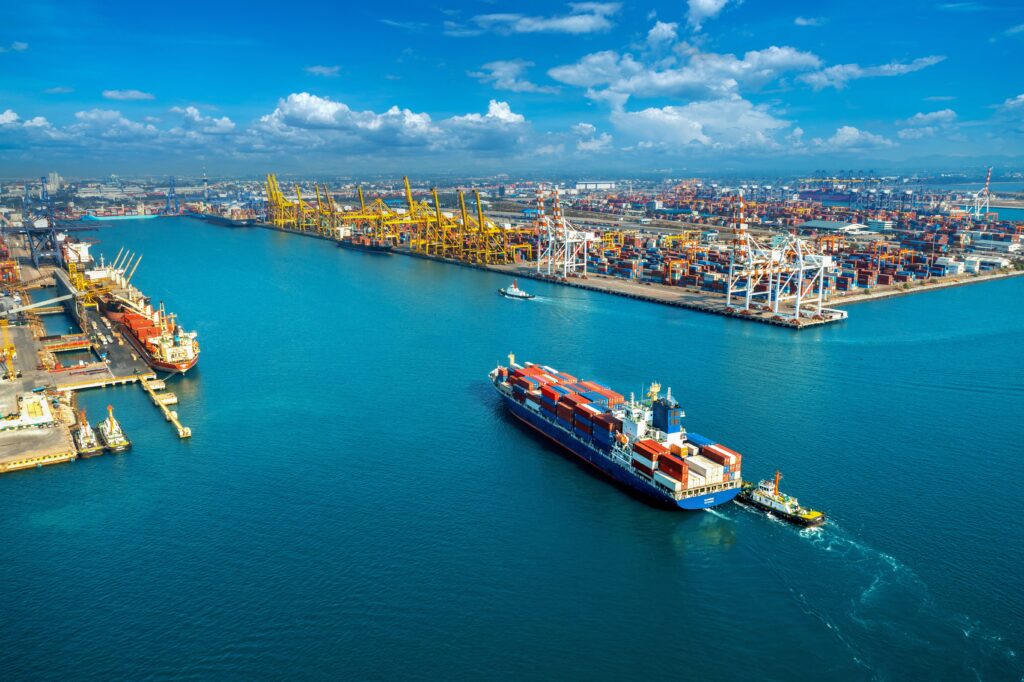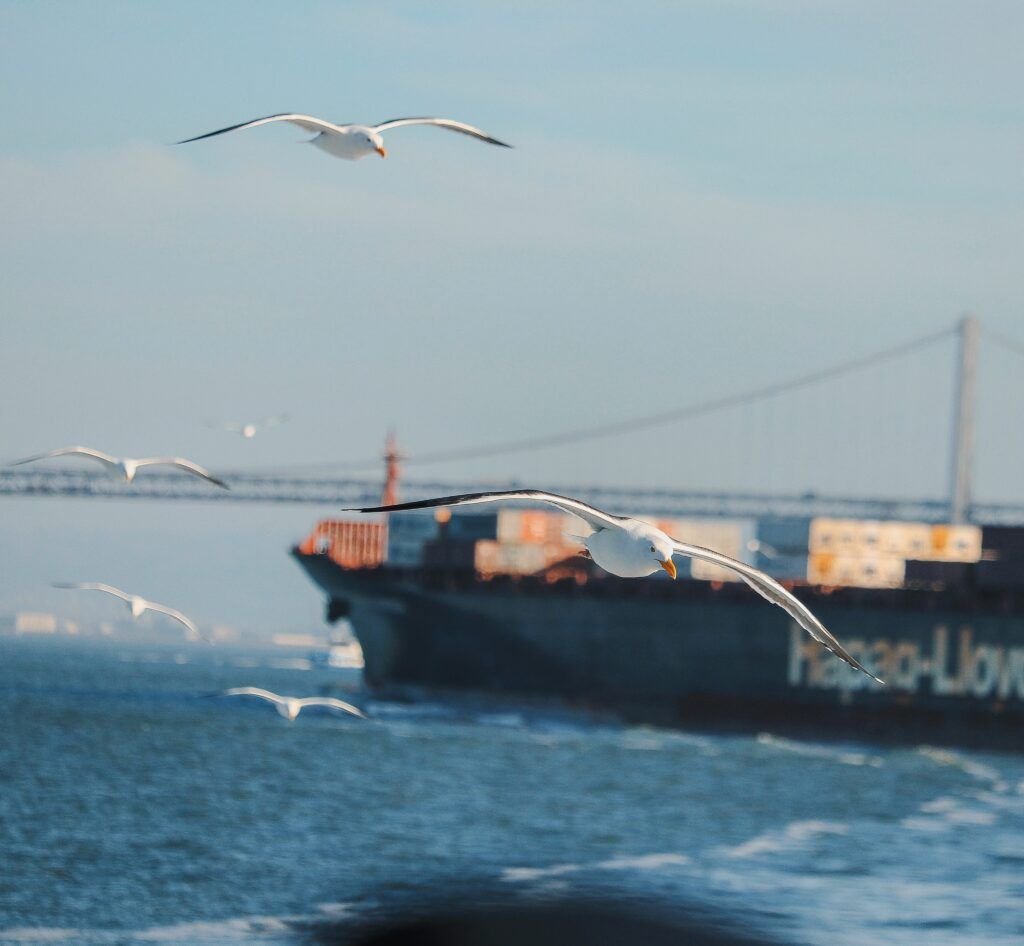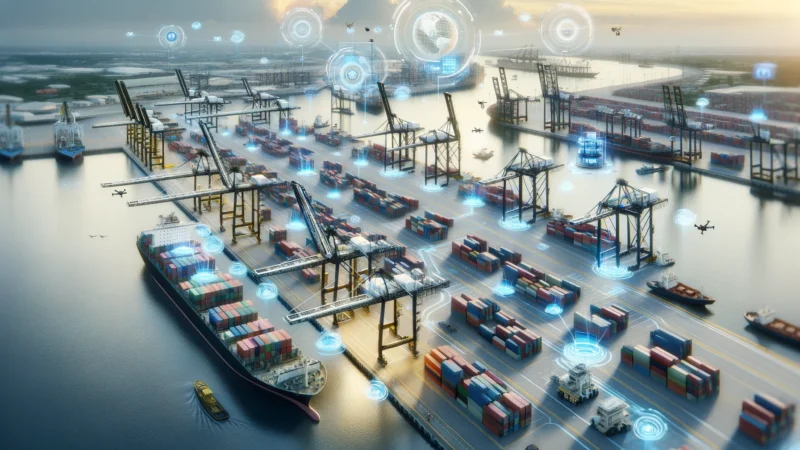
Has the time finally come for Just-in-Time in ports?
Optimizing ship arrivals at port is one of the sector's unfinished business. It is urgent that the sector recovers reliability, generates fewer emissions and consumes less fuel. This is only possible by implementing the Just-in-Time concept, something that there now seems to be the will to implement.

Why Just-in-Time operations are so necessary
The smooth operation of the arrival, berthing and departure of ships depends on the exchange of information between ships, ports and the other agents involved. The objective is to do so following the Just-in-Time (JIT) approach to reduce the waiting time of ships and reduce emissions, fuel and associated economic costs.
- What is the JIT approach? Instead of ships arriving quickly at the port and then having to wait to berth, for example because there is no free berthing line or because port services (tugs, moorings, pilots) are not available to facilitate the ship's entry, the JIT approach coordinates the arrival of ships to match the availability of port services, thus reducing waiting time and improving operational efficiency. If the ship is informed of the availability status of the port operations, it can modify its gear (e.g., by reducing speed and, consequently, consumption, to arrive at the berth just in time to start its operation. This can be of particular relevance in certain port configurations, e.g. in ports where narrow navigation channels are available or where tides have a strong influence: in these cases a small delay in operations can multiply waiting times for multiple vessels.
- 40,000 hours of avoidable waiting and 80 million in savings: this is the conclusion of a study by the start-up AWAKE.AI, which analyzed the data generated over a year by three Moroccan ports where phosphates are transported. Specifically, those cases in which the vessel had to wait in the anchorage area before being able to moor. The same information was analyzed for each terminal to find out where bottlenecks occur. "In this case, the three ports together recorded more than 40,000 hours of avoidable waiting time. For the shipping lines, the cost per hour is $2,000 on average, so they could have saved $80 million a year at all three ports by implementing a just-in-time system," exemplifies Karno Tenovuo, co-founder and CEO of the start-up.
- Reputational problem: in addition, the lack of reliability in the planning of port calls can also generate a significant reputational problem in the sector, affecting the confidence of distribution companies and other key players. This is the opinion of Airam Rodríguez, CEO of Híades Consulting, for whom "it is not only about the technological tools available at the port when the ship arrives, but also about the efficiency of the processes, transparency and availability of information. The perception that the crew, the shipping line and the shipowner have of port management directly influences their confidence and future operational decisions," he says. Moreover, he continues, the need for information and its provision does not begin and end with the berthing of the ship, but is part of a wider supply chain, which starts long before the ship's arrival and continues after its departure. Therefore, he says, ensuring reliability and predictability in port call planning is key “to the overall efficiency of maritime trade and the competitiveness of ports in an increasingly demanding environment,” he adds.

The challenges of Just-in-Time solutions
For Even Ambros Holte, Energy and Transport Project Manager at SINTEF (the independent research organization that is developing the DYNAPORT project), the typology and governance models of ports, coupled with the diversity of parties involved in the different stages of the arrival, mooring or departure operations, are some of the obstacles.
"Ports have different ways of communicating, require different types of information and ways of presenting themselves between ship and port. All this makes it difficult to implement a common solution. What we are doing at DYNAPORT is to develop and standardize an interface between ship and port that is both specific and generic enough to fit all port typologies and can integrate JIT communications," he notes.
Her colleague at SINTEF, researcher and coordinator Agathe Isabelle Rialland, shares the results of a survey conducted by the Port Call Optimisation network, created by ITPCO and with which they collaborate, on the challenges of implementing JIT. Basically, it points to information sharing, inaccuracy of information, and lack of willingness to change.
Another issue pointed out by Airam Rodríguez refers to the governance of the data itself and the interests derived from its knowledge. “Information is power and, therefore, it is necessary to digitize and establish secure, free and standards-based communication platforms, and also to clearly establish data governance policies,” he says.
Port data or the availability of port data is precisely the biggest challenge experienced by Finland's AWAKE.AI. “In northern Europe we have an open API where they can be consulted, but in the south and, above all, outside Europe, the same possibility does not exist, which makes it very difficult to develop algorithms and integrate them,” Tenovuo regrets.

A European project that seeks to implement Just-in-Time
The DYNAPORT (Dynamic Navigation and Port Call Optimisation in Real Time) project, funded by the Horizon Europe program, is pursuing the overall objective of reducing ship and shipping emissions by 10% by addressing one of the issues facing the maritime industry: waiting time in port and the coordination and cooperation between ships, terminals and port authorities.
The project is divided into eight objectives, which Agathe Isabelle Rialland briefly discusses. Before doing so, she points out another condition set by the project: that the results be implementable and scalable.
- Port processes and business models
“We have started mapping the current processes of ports, of shippers' voyage planning and how business models are set up to understand what the challenges are related to voyage and stopover optimization and to be able to establish a plan or guideline that allows for reliable and efficient information exchange.” - Travel optimization
“It's not necessarily about improving tools, but about establishing business models and an agreement between the different parties.” - Improved nautical safety
"The solution being developed related to maritime traffic and other types of services must also predict those areas of high traffic to avoid the risk of collision, etc.. This is an important aspect of the project." - Business models and contracts
“A good organizational context and appropriate business models and agreements guarantee solutions regarding energy efficiency and emission reductions”. - Communication standards
"The simple fact that there are still no communication standards for information exchange makes the process unreliable. This is a very important aspect of the DYNAPORT project." - Development of key performance indicators and measurement of the effectiveness and efficiency of DYNAPORT enhancements
“Measuring the impact of the solutions being developed is one of the objectives of the project itself”. - Business plans for scalability
"Here we rely heavily on our partners and the technology they are developing to ensure that the solutions are scalable. We will work on the business plan to make it so, along with the standards we want to develop and the demonstrations included in the project to ensure acceptance and better dissemination of the results."

Two start-ups with Just-in-Time solutions in the marketplace
- AWAKE.AI is an optimization platform for maritime logistics whose customers are port authorities, terminal operators, shipping lines and cargo owners. For these four segments, they offer two solutions: the Port Vision application and AI Sea, a series of analytics microservices.
"If the customer has a master system that they simply want to make smarter and with JIT capabilities, we can integrate AI Sea as a backend analytics service. But if they don't have one, they can use the application that encompasses all capabilities. Eighty percent of our activities are related to Just-in-Time and right now it's a big driving force for the industry," explains Tenovuo.
They use artificial intelligence to accurately calculate the vessel's arrival time, even weeks in advance, so that bookings can be made. The optimal speed can also be entered for the AI to calculate fuel and emissions and include notes for the terminal operator. If the terminal operator knows that the berth is going to be occupied by another vessel, he can change the time, and then the AI recalculates. Finally, the third actor, the port authority, receives all this data and can approve the berthing request with a single click.
- Híades Consulting has created an ecosystem of intelligent solutions called Amura that enables the digitalization of the port and its operators and provides an interoperability framework using international standards to share relevant and high-value information between the different port operators and stakeholders.
For its CEO, technology is only a means and they mold their solutions according to the needs and requirements of the port, allowing for future scalability by using Híades solutions as a working base.
They also use automation to eliminate repetitive processes that do not add value. "We have been implementing big data and IoT to our solutions since 2014 with the addition of quite a few industry sources needed for decision making. In recent years, we have added high-performance computing, as many ports use our solution both in analytics for competitive surveillance and for artificial intelligence processes with global data," Rodriguez continues.

Interoperability: the crux of the matter
Communication and data, as mentioned by various experts, are fundamental to achieving the Just-in-Time objective. Ensuring interoperability is, for example, fundamental, so that solutions such as AWAKE.AI are compatible with systems such as Port Community Systems or Single Windows.
- For Tenovuo, it makes sense to develop joint programs that amalgamate as many actors as possible and are scalable. That is why he explains that they are involved in DYNAPORT and a second project, Mission, also funded by the EU.
"The need is there, but the challenge is commercialization, as each country and geographic region will have its own systems and the market will be very fragmented. I doubt there will be a scenario in which a few solutions coexist that are dominant," he says.
"Standards exist or are being created. The problem that usually exists is a lack of knowledge, either on the part of the organization that commissions the developments or the technology provider itself, which is why they do not implement them or generate non-interoperable solutions," says Rodríguez.
- DYNAPORT explains that the development of a single, integrated solution is the focus of the Mission project funded by the same European call.
"It is a twin project with which we share the same objective. Although we work together, we work from different approaches. What DYNAPORT wants to achieve is that such a solution can be implemented and used, regardless of port size or vessel segment," Agathe Isabelle Rialland clarifies.
The interoperability plan that DYNAPORT is working on includes a description of the maritime ICT architecture and communication standards being developed, up to ISO standards, a common concept for coordinating ship and port, regardless of whether the port has a highly developed PCS.
"Although it is a European project, DYNAPORT has a broader perspective. We try to be generic enough not to limit access to technical and commercial solutions, as we are aware that it is complicated to have a single platform for the whole industry. It is mainly about ensuring that the ship can speak the same language anywhere in the world and that it understands what the communication standards are with the port," concludes its coordinator.
DYNAPORT project has received funding from the European Union's Horizon Europe Research and Innovation programme under the Grant Agreement No.101138478. This website reflects only the authors'" view and neither the European Commission nor CINEA is responsible for any use that may be made of the information it contains.




